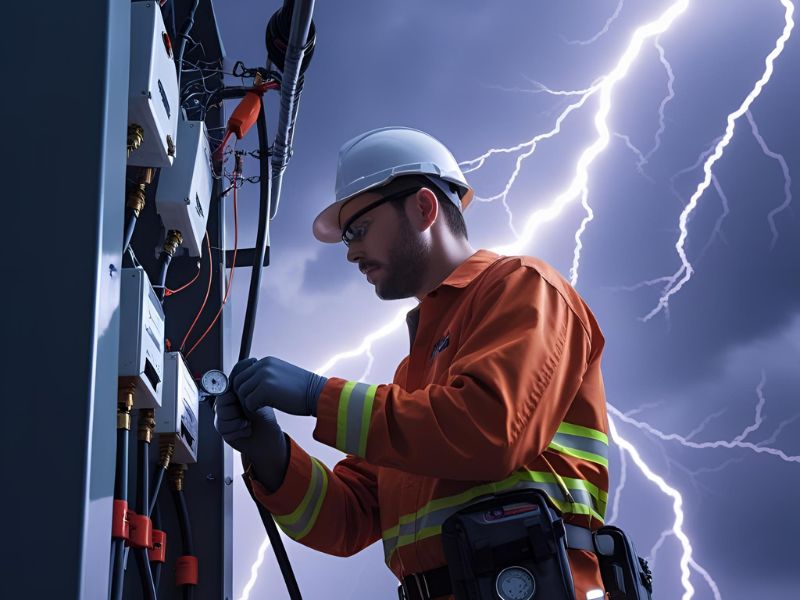
Every year, a whopping 2.1 billion lightning bolts strike the Earth, unleashing energies of up to 300 million volts and 30,000 amps. With such incredible natural forces at play, ensuring your lightning protection system remains effective isn't just recommended - it's absolutely critical for both domestic and commercial properties across the UK.
Lightning protection testing is essential for maintaining the safety and integrity of your property. The frequency of these inspections depends on several factors, including the type of building, risk level, and applicable safety standards. At Lightning Protection Testing UK, we see firsthand how proper testing schedules can prevent catastrophic damage and save lives.
Lightning strikes can heat air to a staggering 27,000°C and cause devastating damage if your protection system fails. In 2023 alone, lightning strikes across North America and Europe caused $76 billion worth of damages. Without properly maintained systems, commercial properties and homes face risks of fire, electrical damage, and potential injury to occupants.
A poorly maintained system can fail when you need it most. Regular testing ensures your lightning protection system's effectiveness and helps identify potential issues before significant weather events occur.
In the UK, lightning protection testing follows the BS EN 62305 standard, which sets clear guidelines for how often should lightning protection be tested. For those wondering what is the BS EN 62305 test, this comprehensive framework ensures that electrical systems across British commercial properties and residential buildings maintain proper protection levels.
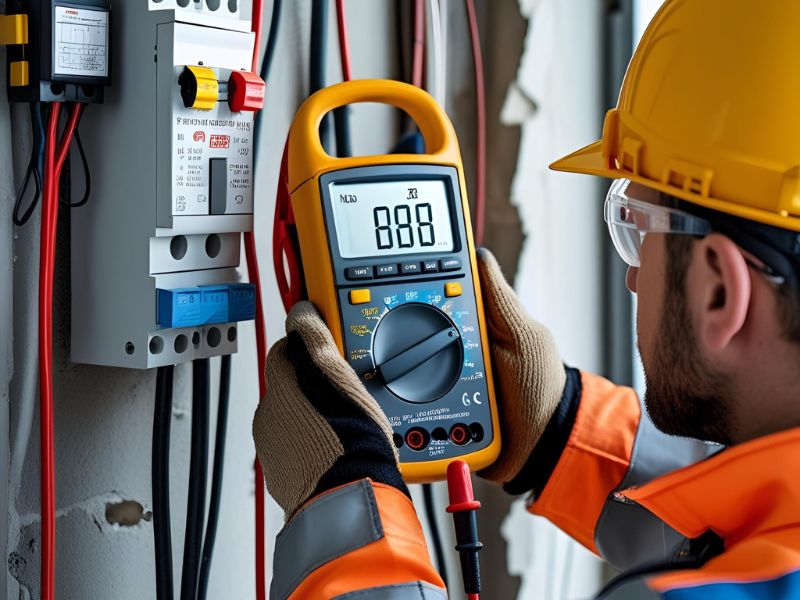
The BS EN 62305 standard mandates annual inspection for most lightning protection systems. However, experienced professionals recommend conducting these inspections slightly shorter than 12 months to account for seasonal variations in temperature and ground humidity that can affect system performance.
During a visual inspection, qualified professionals examine air termination elements, down conductors, and earthing system components for signs of physical damage, corrosion, or loose connections. This process typically takes several hours depending on the system's complexity.
High occupancy buildings and structures housing sensitive equipment require more frequent inspections. The standard recognizes that not all buildings face the same lightning strike risk, so testing schedules vary accordingly:
Understanding the various testing methods helps property owners ensure compliance with relevant safety standards. Lightning protection system inspection involves multiple components that work together to provide comprehensive protection.
A thorough visual inspection examines all visible components of your lightning protection system. Fully qualified technicians check for damaged conductors, corrosion on metal components, and proper connections throughout the system. This non-invasive testing method can identify many potential problems without complex equipment.
The inspection covers lightning rods, surge protection devices, and all visible portions of the grounding system. Any physical damage or signs of wear must be documented and addressed promptly to maintain system integrity.
Ground resistance testing measures how effectively your earthing system can dissipate electrical energy into the ground. This electrical inspection uses specialized equipment to measure resistance values and ensure they meet safety standards outlined in the Electricity at Work Act.
Resistance testing typically occurs every one to two years, depending on your system's risk classification. Weather conditions can affect readings, so testing often occurs during different seasons to get accurate assessment data.
A detailed report accompanies every professional inspection, documenting all findings and recommendations. This documentation helps property owners track their system's condition over time and demonstrates compliance with legal requirements and insurance requirements.
Several elements influence how often should lightning protection be tested for your specific property. Understanding these factors helps develop appropriate maintenance schedules that balance safety with practical considerations.
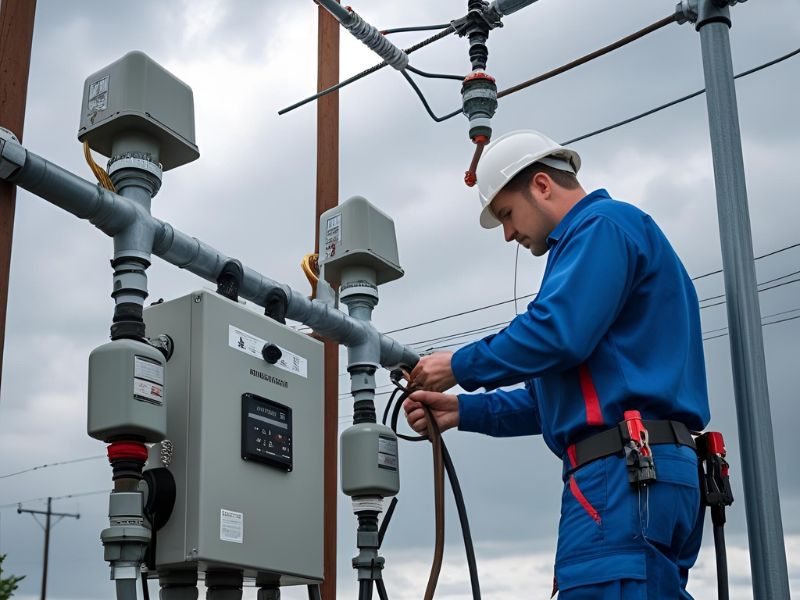
Properties in areas prone to severe weather may need more frequent inspections. Heavy rain, high winds, and frequent storms can accelerate wear on lightning protection systems. Coastal locations often require additional attention due to salt air corrosion.
Structural changes to buildings can also affect testing schedules. Adding equipment, modifying rooflines, or installing new electronic systems may necessitate additional inspections to ensure continued protection.
Commercial properties with high occupancy or critical operations typically require more frequent inspections than standard residential buildings. Facilities housing electronic equipment or sensitive instrumentation may need specialized testing protocols.
The Electricity at Work Regulations emphasize employer responsibilities for maintaining safe electrical systems, including lightning protection. Regular testing helps ensure compliance with these work regulations and protects both employees and visitors.
Older lightning protection services may require more frequent monitoring as components age. Modern systems with advanced surge protection typically maintain effectiveness longer but still need regular testing to verify performance.
Recent installations require post-installation testing to verify proper function, followed by routine inspections according to standard schedules. Such events as direct lightning strikes may trigger additional testing regardless of normal schedules.
While property owners can perform basic visual checks, comprehensive lightning protection testing requires qualified professionals with specialized knowledge and equipment. The complexity of modern protection systems makes professional assessment essential for accurate evaluation.

Certified technicians understand the intricacies of different protection system designs and can identify subtle problems that untrained observers might miss. They use calibrated equipment for resistance testing and provide detailed documentation required for insurance and regulatory compliance.
Professional testing also includes recommendations for system improvements and identifies potential hazards that could compromise protection effectiveness. This expertise proves invaluable for maintaining system integrity over time.
Lightning protection testing involves working with electrical systems and often requires access to elevated areas. Professional technicians have appropriate safety equipment and training to perform these inspections safely.
Attempting complex electrical inspection without proper training can be dangerous and may invalidate insurance coverage or create liability issues. Professional services ensure work meets all relevant british standard requirements.
Regular testing reveals common problems that can compromise lightning protection system effectiveness. Understanding these issues helps property owners recognize when additional attention may be needed.
Loose connections represent one of the most frequent issues found during inspections. Thermal cycling from weather conditions and natural settling can affect connection integrity over time. Proper maintenance addresses these issues before they compromise system performance.
Corrosion at connection points can increase resistance and reduce protection effectiveness. Visual inspection often identifies early signs of corrosion that can be addressed through cleaning or component replacement.
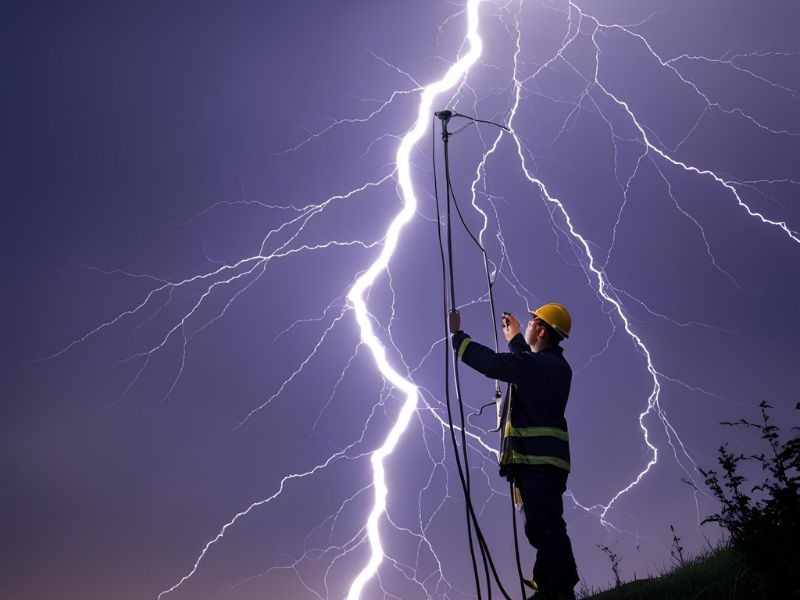
Structural damage from storms, construction activities, or normal wear can affect lightning protection components. Regular inspections help identify these issues promptly and prevent system failure during future strikes.
Down conductors may be damaged by maintenance activities or building modifications. Ensuring all personnel understand the importance of protecting these components helps prevent accidental damage.
Compliance with lightning protection testing requirements affects both legal obligations and insurance coverage. Questions like "is lightning protection a legal requirement" often arise, and understanding these implications helps property owners make informed decisions about maintenance schedules.
The Work Act and related safety standards establish minimum requirements for electrical system maintenance, including lightning protection. Non compliance with testing requirements may result in penalties and increased liability exposure.
Local authorities may require documentation of regular testing for certain types of commercial properties. Maintaining detailed records helps demonstrate compliance and supports permit applications or renewals.
Many insurance policies require regular testing of lightning protection systems as a condition of coverage. Failure to maintain proper testing schedules may void coverage or result in reduced claim payments following damage.
Some insurers offer premium discounts for properties with well-maintained lightning protection systems. Regular testing documentation supports these applications and may result in cost savings over time.
Creating a comprehensive maintenance plan ensures your lightning protection system receives appropriate attention throughout its service life. Consider multiple factors when establishing testing frequencies and procedures.
Weather patterns affect both testing conditions and system performance. Scheduling inspections during mild weather provides better working conditions and more accurate resistance measurements.
Seasonal variations in ground moisture affect earth resistance readings. Testing during different seasons provides a complete picture of system performance throughout the year.
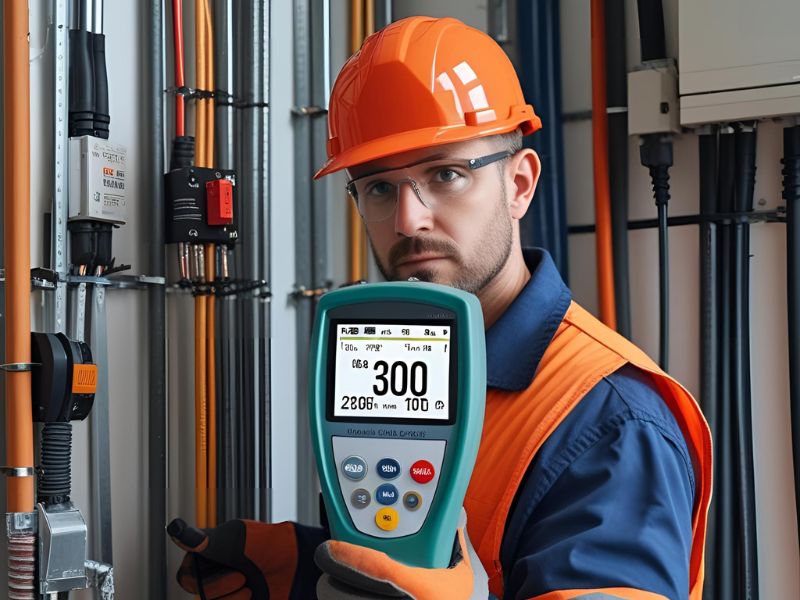
Maintaining comprehensive records supports regulatory compliance and helps track system performance over time. Detailed reports from each inspection provide valuable data for making maintenance decisions and planning future upgrades.
Digital record systems make it easier to track testing schedules and ensure timely completion of required inspections. These systems can provide reminders and help coordinate with testing providers.
Advanced testing equipment and techniques improve the accuracy and efficiency of lightning protection system evaluation. Modern methods provide more detailed information about system condition and performance.
Sophisticated meters and analyzers provide precise measurements of ground resistance and system continuity. These tools help identify problems that might not be apparent through visual inspection alone.
Digital documentation systems capture testing data and generate comprehensive reports automatically. This technology improves record accuracy and makes it easier to track system performance over time.
Some organizations use data analysis to predict when components may need replacement or additional attention. This approach can help optimize maintenance schedules and reduce unexpected failures.
Trending analysis of test results over time can reveal gradual changes in system performance that might indicate developing problems. Early identification allows for proactive maintenance that prevents system failure.
Understanding the costs associated with lightning protection testing, including questions like how much does lightning protection testing cost, helps property owners budget appropriately and make informed decisions about service providers and testing frequencies.
Professional testing services typically charge based on system complexity and testing requirements. Visual inspections generally cost less than comprehensive electrical testing, but both are essential for complete system evaluation.
The uk market leader in lightning protection testing, Lightning Protection Testing UK offers competitive pricing for comprehensive testing services. Investing in quality testing services provides better value than attempting to minimize costs through less frequent testing.
The potential costs of lightning damage far exceed testing expenses. Commercial properties may face business interruption costs in addition to direct damage repair expenses.
Electronic systems and sensitive equipment are particularly vulnerable to lightning damage. Regular testing helps prevent expensive equipment replacement and data loss that can result from system failure.
Selecting qualified testing providers ensures your system receives proper evaluation and maintenance. Look for companies with appropriate certifications and experience with your type of property, such as a reputable lightning protection company.

Choose providers who understand relevant safety standards and have experience with similar properties. Ask about technician qualifications and insurance coverage before engaging testing services.
References from other property owners can provide valuable insights into service quality and reliability. Professional organizations often maintain directories of qualified testing providers.
Property owners can help ensure efficient testing by providing access to all system components and relevant documentation from previous inspections. Clear communication about property use and any concerns helps technicians focus their evaluation appropriately.
Scheduling testing in advance helps ensure availability and may result in better pricing. Some providers offer discounts for regular customers or multiple properties.
Lightning protection technology continues to evolve, and testing methods improve with advancing technology. Staying informed about developments helps property owners make informed decisions about system upgrades and maintenance.
Periodic evaluation may reveal opportunities to enhance protection through component upgrades or system modifications. Modern surge protection devices and improved materials can provide better protection and longer service life.
Changes in building use or occupancy may require system modifications to maintain appropriate protection levels. Regular testing helps identify when upgrades might be beneficial.
Developing long-term maintenance plans helps ensure consistent system performance and budget predictability. Consider potential changes in building use, technology requirements, and regulatory standards when planning future maintenance.
Protecting your property from lightning damage requires regular testing by qualified professionals. Don't wait until the next storm to discover problems with your protection system.
Contact Lightning Protection Testing UK today for your free quote on comprehensive lightning protection testing services. Our fully qualified technicians provide thorough inspections that meet all BS EN 62305 requirements and help ensure your property stays protected year-round.
Whether you manage a single commercial property or multiple facilities, we offer flexible testing schedules that meet your specific needs and budget requirements. Protect your investment and ensure peace of mind with professional lightning protection testing services.